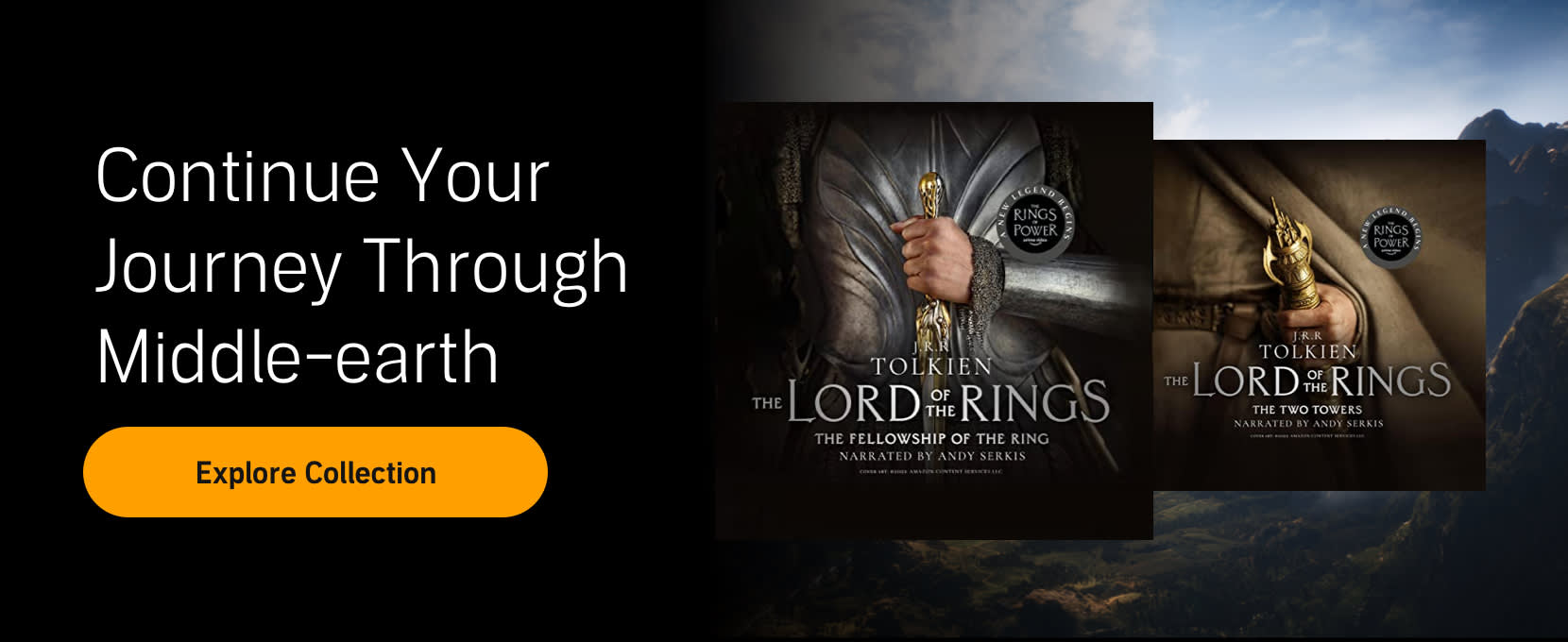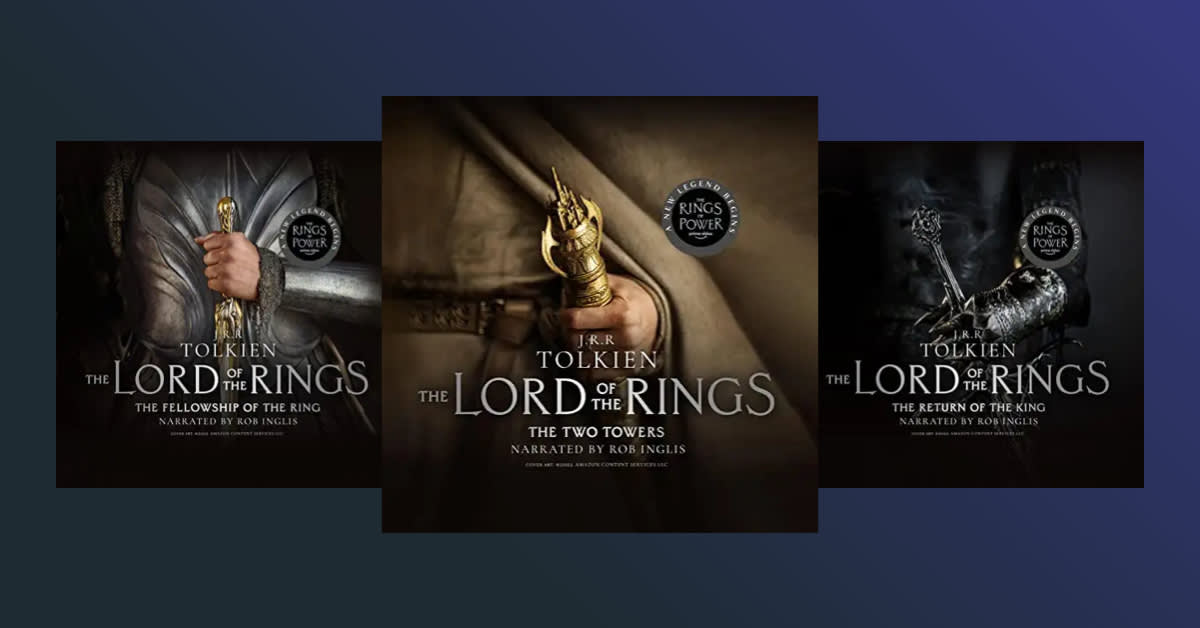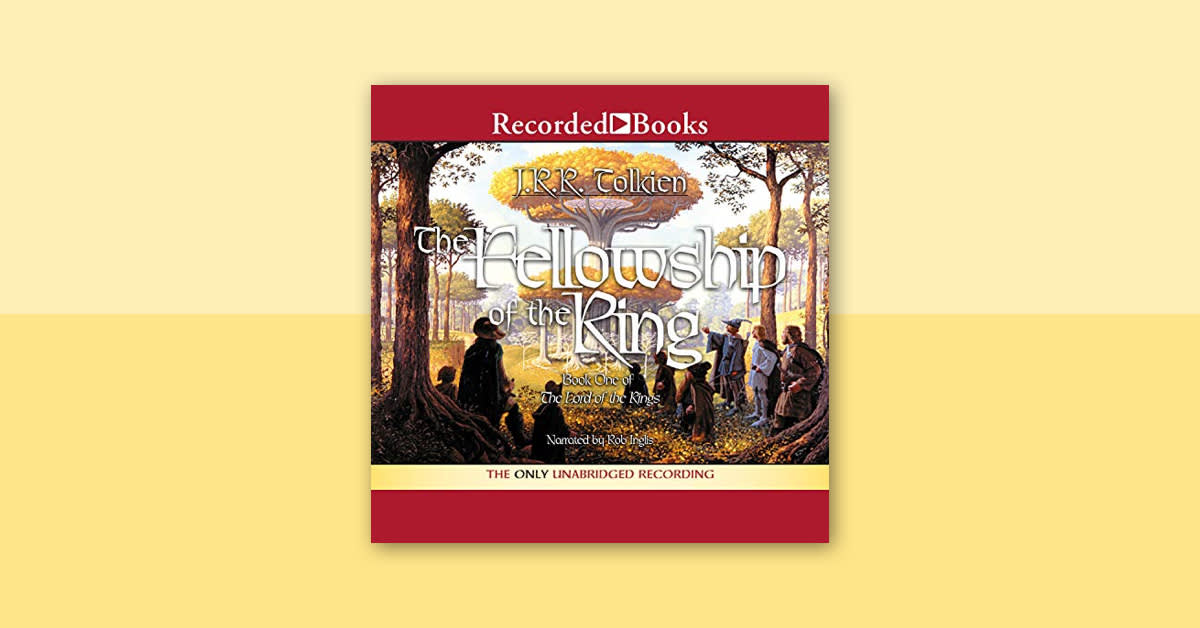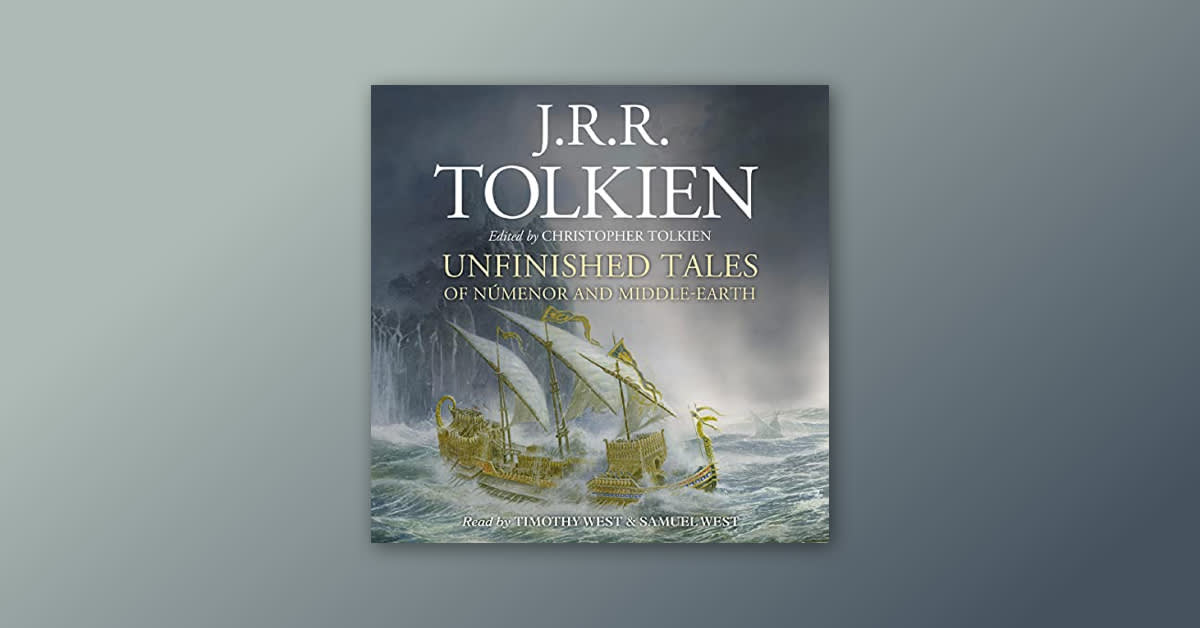Welcome to Middle-earth, the main continent of Arda and the setting for J.R.R. Tolkien's The Hobbit, The Lord of the Rings trilogy, and a host of other in-universe stories, including The Children of Hurin, Beren and Lúthien, and Unfinished Tales. Middle-earth is a fantastical realm rooted in detailed world-building and mythos that have since gone on to inspire many other fantasy works. Whether you’re new to the lands of Middle-earth or just want to learn more about Tolkien’s universe, read on for everything you need to know.
What is Middle-earth?
Middle-earth, also known as Ennor or Endor, is the main continent of Arda, Tolkien's imagined version of our Earth's past. Middle-earth is reminiscent of old Europe in the Middle Ages and earlier—with a significant difference. This version of our world is populated not just by humans but also by Elves, Hobbits, Orcs, and Dwarves, among many species.
According to the mythology of Tolkien's Middle-earth, the world of Arda used to consist of interconnected worlds. At the center of that universe was Middle-earth, the world of humans, and across the great ocean, Belegaer, was Aman. There are other lands in Arda, but these are the two main continents.
What inspired Middle-earth?
The origins of Middle-earth as a world appear to come from many different influences. For instance, Tolkien admitted in his published letters that the setting of Middle-earth is in fact based on our Earth's geography, with locations in his world mirroring countries in our own. Additionally, the books were very much influenced by Tolkien’s own experiences in World War I. Battle locations and feuds between the different peoples within Middle-earth also align with what happened in the war.
The name Middle-earth comes from the Middle English "middel-erde," a folk-etymology for the Old English word, "middangeard." Middangeard is mentioned multiple times in Beowulf, a text Tolkien translated and a major influence on his writing.
Significant Lands of Middle-earth
The Shire
The Shire is in the northwestern portion of Middle-earth, in the northern region of Eriador, and is home to the Hobbits.
Comparing a Middle-earth map to modern European maps, the Shire is located at about the same position as England and shares many similar traits to that country.
The climate in the Shire is like that of England: cool, with a significant amount of rainfall and warm summers. Inhabitants of the Shire speak Hobbitish and Westron, also known as the Common Speech.
Rohan
Situated in the plains between the Misty Mountains and the White Mountains, Rohan is a kingdom populated by humans.
The lands of Rohan are lush and green, described as appearing like a "sea of grass."
The spoken languages in this part of Middle-earth are Rohirric, Westron, and Khuzdul.
Rhovanion
Rhovanion, also known as Wilderland, is a large region of northern Middle-earth. It's where Mirkwood, the greatest forest of Middle-earth, lies.
Formerly inhabited by Hobbits, this area is home to many different beings, including Dwarves, Elves, humans, Orcs, Eagles, Dragons, and a few remaining Hobbits.
Gondor
Gondor is the most prominent kingdom inhabited by humans in Middle-earth. In his letters, Tolkien confirmed that Gondor is based on Italy.
The first line of the Kings of Gondor were primarily members of the House of Anárion. But after a succession crisis, the throne was claimed by the Stewards. After the second and final defeat of Sauron, the kingship of Gondor was restored and Aragorn was crowned.
Westron is the main language of the people in Gondor.
Mordor
Mordor is in the southeast region of Middle-earth, east of Gondor. For many years, it was ruled by Sauron as he attempted to gain control over all of Middle-earth.
Mordor was based on Tolkien's wartime experiences, as he fought in the trenches of the Western Front. In the creation of Mordor, Tolkien was also influenced by the Black Country of the West Midlands and the descriptions of Grendel's wilderness in Beowulf.
During Sauron's reign in Mordor, the Dark Lord gathered many beings to serve him, including humans, Orcs, and Trolls. Along with speaking Westron, many inhabitants of Mordor are fluent in The Black Speech, a language created by Sauron for his followers.
Rhûn
Rhûn, also called the Eastlands, is a large region in far-eastern Middle-earth.
This land was home to many different groups who were often involved in conflicts with one another. But in serving Sauron, these factions became united in their hatred of the West.
The people of Rhûn speak a wide range of languages, all descending from the language of the first men of Hildorien.
Iron Hills
The Iron Hills, located in the north-east of Middle-earth, is a realm of Dwarves.
As its name suggests, the Iron Hills are rich in iron.
Inhabitants of the Iron Hills speak Khuzdul, the secret language of the Dwarves. They also speak Westron.
The Peoples and Creatures of Middle-earth
Men
Initially named Atani, these are the humans of Middle-earth. This race was created by the supreme God, Ilúvatar, and bears the Gift of Men: mortality. Like humans in the real world, they experience aging, illness, and death. However, no one is sure what happens to the Men of Middle-earth, or where they go, when they die.
Humans are divided into many different houses and subcultures, leading to conflict and war amongst them.
Significant humans in the world of The Lord of the Rings include Aragorn, Boromir, and Faramir.
Elves
Elves were the first race created by the God Ilúvatar. Unlike humans, Elves do not age after reaching their prime, and they are immune to illness. They can still die, but only due to severe despair or an act of violence.
Elves come of age at roughly 50 years old, and they usually get married around this time.
Elves are seen as exceptionally beautiful, and they also possess exceptional abilities. Elves have much better hearing and sight than humans, and they need less sleep to function.
Notable Elves in the world of The Lord of the Rings include Galadriel, Elrond, Gil-Galad, and Legolas.
Dwarves
Dwarves, also known as the Khazâd in their own tongue, were created by Aulë—even though making new life exceeded his power and authority. After being reprimanded by Ilúvatar, Aulë was prepared to destroy the beings he made purely to teach and love. But instead, Eru adopted the Dwarves as his own Children.
Dwarves are short, stocky, and very strong, and most take pride in their thick beards. This race is especially skilled in crafting, smithying, and mining.
Important Dwarf characters include Gimli and Thorin.
Hobbits
The origins of Hobbits, otherwise known as Halflings, are unknown. However, it is assumed that Hobbits are related to humans in some way.
The average lifespan of a Hobbit is around 100 years, though it is not unusual for Hobbits to live beyond that age. A Hobbit matures to adulthood at the age of 33 and becomes middle-aged at 50.
Hobbits are known for being short—even shorter than Dwarves—and have gotten smaller through the ages. Hobbits typically stand between two and four feet tall. They're also known for their feet, which are hairy and leathery, meaning Hobbits don't usually feel the need to wear shoes. Hobbits are also skilled listeners and have superior eyesight.
Bilbo Baggins, Frodo Baggins, Samwise Gamgee, Meriadoc "Merry" Brandybuck, Peregrin "Pippin" Took, and Sméagol are Hobbits that stand out in Tolkien's works.
Ents
The Ents are humanoid creatures that were made at the request of Yavanna to protect the trees. For this reason, they're also known as Shepherds of the Trees.
Ents stand at about 14 feet tall and have bark-like skin. In other words, they look like humanoid versions of trees.
Notable Ents include Treebeard and Quickbeam.
Orcs
Orcs are a violent race created by the first Dark Lord, Morgoth. They are best known for serving the Dark Lords of Middle-earth.
Orcs are modest in stature, with the largest being about the same height as the average human and the smallest around the size of a Hobbit. Despite their varying appearances, Orcs are all humanoid in shape with dark skin, pointy ears, and sharp teeth.
Infamous Orcs include Azog, Bolg, Gorbag, and Grishnákh.
Uruk-hai
While there are many breeds of Orcs, Uruk-hai are the strongest.
The Uruk-hai may have been the result of crossbreeding Orcs and humans. The wizard Saruman the White bred Uruk-hai specifically to fight for his army in the War of the Ring.
Trolls
Tolkien's Trolls were inspired by Norse mythology. Trolls were created by Melkor before the First Age. During the Second and Third Age, they emerged as some of Sauron's most dangerous warriors.
As a species, Trolls possess impressive physical strength and poor intellect. Their biggest weakness: Many Trolls turn into stone when exposed to sunlight.
Dragons
Dragons were first bred by Morgoth for use during war. There are many types of Dragons in Tolkien's world. Some breathe fire, some are winged, and some are more snake-like.
Dragons are covered by nearly impenetrable scales that can resist most weapons. They're also known for their insatiable thirst for treasure and their strong sense of smell. Most Dragons are able to speak Westron, the Common Speech of Middle-earth.
One of the most notable Dragons in Tolkien's novels is Smaug, the last "great" Dragon of Middle-earth. He appears in The Hobbit.
Great Eagles
Great Eagles, often called Eagles of Manwē, are messengers and spies who are able to see through all physical matter. The Eagles were sent from Valinor to Middle-earth to spy on the Ñoldor, Vala Morgoth, and later Sauron.
Wargs
Residing in the Misty Mountains, Wargs are a breed of wolves that are incredibly large, intelligent, and aggressive.
Wargs have shaggy black or brown hair (sometimes gray or white), and they're able to move very quickly, making them a formidable foe.
Ravens of Erebor
The Ravens of Erebor are large black birds who served as messengers for the People of Thrór. They're capable of speech, and many of them speak Westron.
Ravens have remarkably long lives, often surviving to the age of 150.
Mearas of Rohan
Mearas are wild horses descended from Felaróf, whom Eorl, the first King of Rohan, was able to tame. Felaróf's descendants will only allow the Kings of the Mark and their sons to ride them.
King Theoden's horse, Shadowfax, who is later bestowed to Gandalf the White, was among the Mearas.
Ungoliant
Ungoliant is an evil spirit that takes the form of a giant female spider. Though her specific origins are unknown, it is speculated that Ungoliant may have been one of the Maiar corrupted by Melkor.
Ainur
Ainur are the Holy Ones, the first and mightiest beings created by Ilúvatar. After Arda was created, many of the Ainur came down to help this realm of continents and oceans flourish.
14 of these Holy Ones became the Valar, or Powers of Arda. The 15th Ainur, Melkor became the first Dark Lord.
Maiar
Lesser Ainur that came to Arda are known as the Maiar.
Five of these spirits went on to become the incarnated Wizards in the Third Age.
Wizards
The Wizards, first called Istari, were five Maiar spirits sent to Middle-earth by the Valar to help fight against Sauron. All of the Wizards took the form of elderly men. Despite their appearance, Wizards age very slowly and possess exceptional physical strength.
Each Wizard holds a staff and is associated with a color—for instance: Radagast the Brown, Gandalf the Gray, and Saruman the White.
The History of Middle-earth
The history of Middle-earth is divided into three time periods: the Years of the Lamps, the Years of the Trees, and the Years of the Sun. The Years of the Sun are further divided into four Ages.
The Years of the Lamps
The Years of the Lamps started with the Valar's creation of Arda. Before the sun came to be, Arda gained vital heat and light from two large lamps: Illuin and Ormal. From these lamps, the first plants and forests were able to grow, and animals also came to life on Arda. This time period was called the Spring of Arda. The end of the Years of the Lamps are marked by Melkor's destruction of the two lamps, causing the end of the Spring of Arda. At this point, Arda was lit only by starlight, and most living things were sent into the Sleep of Yavanna.
The Years of the Trees
After the destruction of Illuin and Ormal, Yavanna made the Two Trees, named Telperion and Laurelin. The trees illuminated Aman, where the Valor lived, but left Middle-earth in darkness. Towards the end of the Years of the Trees, the Elves were awakened in Middle-earth. This marked the beginning of the First Age, which continued into the Years of the Sun. During this time, Melkor was imprisoned in the Halls of Mandos. The Years of the Trees ended after Manwë released Melkor from his imprisonment, Ungolaiant destroyed the Two Trees, and Melkor fled to Middle-earth.
The Years of the Sun
The Years of the Sun began when the Sun and Moon were created to light Arda. This time period is divided into four Ages.
The First Age
Also known as the Elder Days, the First Age gave birth to the races and creatures of Arda. This time period also saw Melkor renamed Morgoth. After several great battles, Middle-earth was at peace for a long period of time, called the Long Peace. Then Morgoth broke the Siege of Angband, and several Elven kingdoms fell. Ultimately, Morgoth was captured and cast out of Arda. The end of the First Age is marked by the destruction of Beleriand in the War of Wrath.
The Second Age
The Second Age is the longest of the chronicled ages. This time period marked the beginning of the rise of the Dark Lord Sauron. After the defeat of his master Morgoth, Sauron was able to return to Middle-earth from the East. He built a dark fortress called Barad-dûr near Mount Doom. It was also during the Second Age that the Rings of Power were forged. With knowledge obtained by Sauron, the Elves forged 19 great rings. The 20th ring, forged by Sauron himself in the fires of Mount Doom, was the One Ring to rule them all. About halfway through the Second Age, the War of the Elves and Sauron began, in which Sauron fought against the Elves in Eriador and their allies. The end of the Second Age is marked by the defeat of Sauron. Isildur was able to cut the One Ring from Sauron's finger, thus destroying his physical form. Consequently, the One Ring was lost for more than 2,000 years.
The Third Age
The Third Age is when the events of Tolkien's The Hobbit and The Lord of the Rings trilogy take place. This era lasted for 3,021 years, starting with Sauron's return and ending with the destruction of the One Ring. At the beginning of the Third Age, the Wizards came to Middle-earth to help the Free Peoples fight against the coming return of Sauron. Sauron returned to Mordor, and the Hobbit Bilbo Baggins unknowingly found the One Ring. Suspecting that the One Ring was in the Shire with Bilbo, the Wizard Gandalf began visiting the Shire regularly. When Frodo Baggins was given the Ring, Gandalf sent him on a quest to destroy the ring once and for all. So began the Great War that would end the Third Age, the War of the Ring. After the Ring was destroyed and Aragorn became king, the kingdoms of Arnor and Gondor were reunited and the Third Age came to its end.
The Fourth Age
The Fourth Age began when Sauron was finally defeated and the Keepers of the Three Rings left Middle-earth for the mystical lands of the Uttermost West. Whether the Fourth Age has ended or continues is open to speculation. Eventually, leading up to the present day, all races aside from humans faded away, leaving us with the world of mortals we have today. However, the official timeline for exactly when and how this happened remains unclear.





